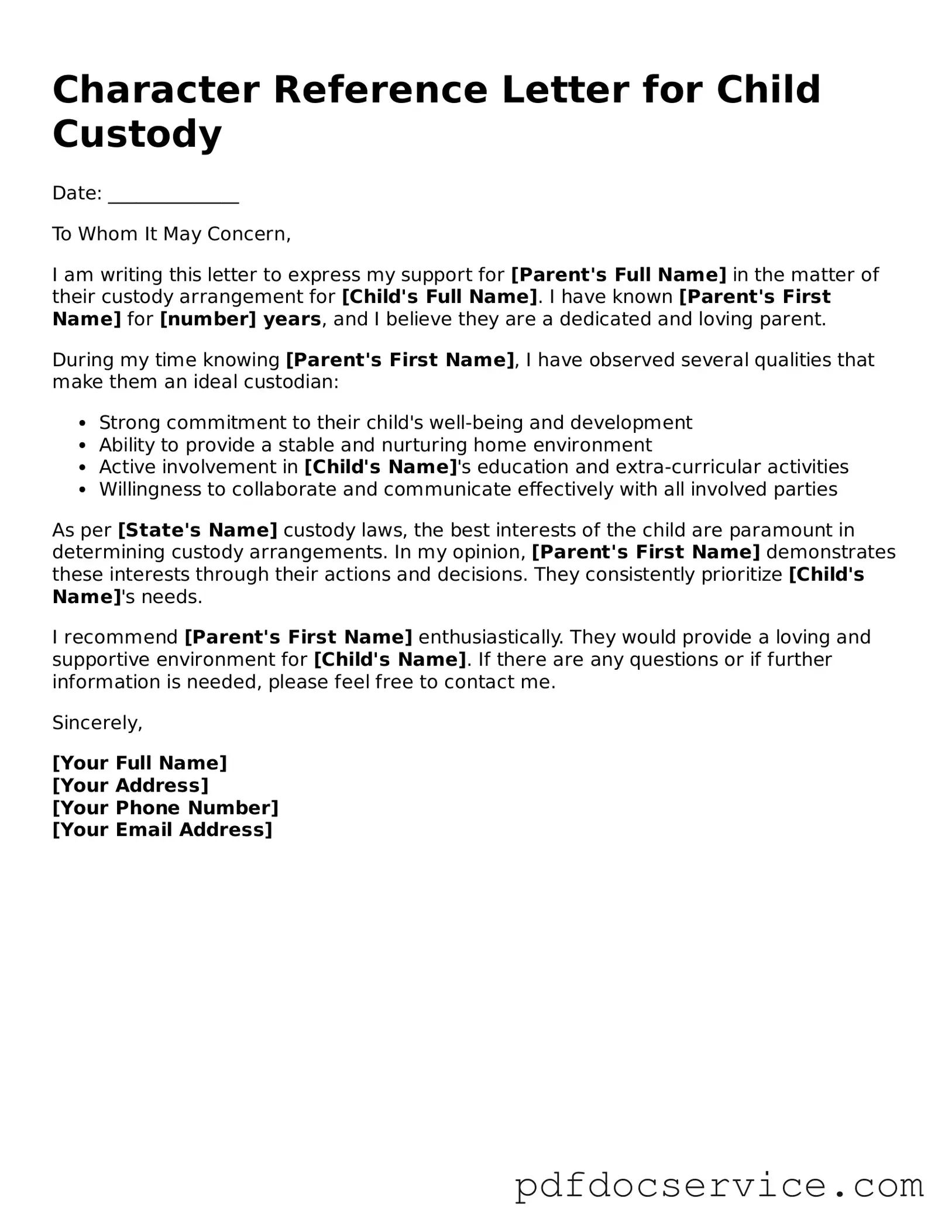What is a Character Reference Letter for Child Custody?
A Character Reference Letter for Child Custody is a document that provides insight into a parent's character and parenting abilities. It is typically written by friends, family members, or colleagues who can speak to the individual's suitability as a parent. This letter can be submitted to the court during custody proceedings to support the parent's case.
Who should write the letter?
The letter should be written by someone who knows the parent well and can provide specific examples of their parenting skills and character. Ideal writers include:
-
Close friends
-
Family members
-
Teachers or coaches
-
Neighbors
-
Colleagues or supervisors
What should be included in the letter?
The letter should include several key elements:
-
A brief introduction of the writer, including their relationship to the parent.
-
Specific examples of the parent's positive qualities and parenting skills.
-
Any relevant experiences that highlight the parent's commitment to their child's well-being.
-
A closing statement that reinforces the writer's support for the parent in the custody case.
How long should the letter be?
The letter should be concise, typically one to two pages in length. It should provide enough detail to be impactful but remain focused and to the point. A well-structured letter is more likely to be read and considered by the court.
While there is no strict format, the letter should be typed and professionally presented. It should include the following elements:
-
Date
-
Address of the court (if known)
-
Salutation (e.g., "Dear [Judge's Name]")
-
Body of the letter
-
Closing (e.g., "Sincerely")
-
Signature of the writer
-
Printed name and contact information
Can the letter be handwritten?
While a handwritten letter may be acceptable, it is generally recommended to type the letter. A typed letter appears more professional and is easier to read, which can enhance its credibility in the eyes of the court.
How should the letter be submitted?
The letter should be submitted according to the court's guidelines. This may involve filing it with the court clerk or providing copies to both parties involved in the custody case. It is important to check the specific requirements of the court handling the custody matter.
Can multiple letters be submitted?
Yes, multiple character reference letters can be submitted to strengthen the case. Each letter should come from a different person to provide a well-rounded view of the parent's character. However, it is essential to ensure that all letters are relevant and add value to the case.
Will the letter be confidential?
Character reference letters are generally not confidential and may be viewed by both parties involved in the custody case. It is important for the writer to be aware that their statements could be discussed in court or used in negotiations.
What if the writer has concerns about the parent's ability to care for the child?
If the writer has genuine concerns about the parent's ability to care for the child, it is crucial to address these issues honestly. The letter should focus on factual observations and specific incidents. It is important to provide a balanced perspective, as the court values honesty and transparency.
